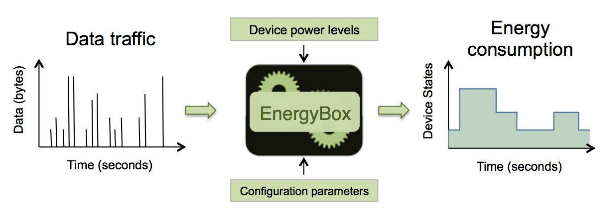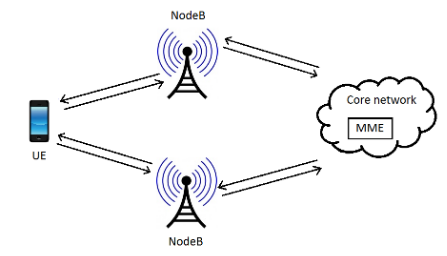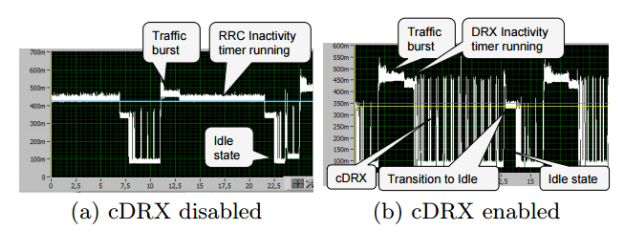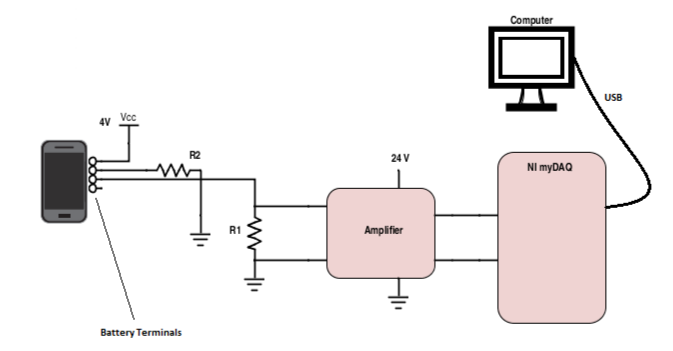ABSTRACT:
With the steady increase in the use of mobile technologies, studying the energy consumption of mobile applications becomes more interesting. In this thesis, the energy consumption of such applications connected to Long Term Evolution (LTE) cellular networks is studied.
Using physical measurements on a mobile device, this thesis aims at characterizing the energy consumption due to communication of a mobile device connected to an LTE network in order to extend EnergyBox. EnergyBox is a tool that estimates the communication energy of mobile devices using packet traces as input.
We perform systematic experiments which exercise the LTE network interface of a mobile device while measuring the consumed power. Using the resulting data and a literature review of the operation of the LTE interface an energy model for LTE is developed. The model is then implemented in EnergyBox.
The evaluation of the model is performed by comparing the accuracy of the energy model to physical measurements using five different packet traces from different mobile applications. The results show that the model integrated in EnergyBox provides an average accuracy of between 90% and 100%.
BACKGROUND
This chapter provides the needed theory and background information to understand the rest of this thesis. It describes the basics of EnergyBox as well as the main factors impacting the energy consumption of a mobile device when connected to an LTE network.
EnergyBox:
EnergyBox is software tool written in Java used to simulate the energy consumption of mobile devices for both 3G and WiFi networks. It uses packet traces (synthetic or captured in devices) to estimate the energy consumed by the device. This is useful to characterize communication energy for applications which in turn can help better understand how to evaluate and optimize the applications.
LTE Energy Consumption:
In LTE, scheduling of data communication is determined by the network scheduling algorithms. These are controlled by the Mobility Management Entity (MME). The MME communicates with several base stations (NodeB) and services requests from the User Equipment (UE) to make sure that the UE receives the resources it requires from the base stations .Figure 2 shows a simple overview of this.
DRX Timers in the Literature:
Several different timers have been observed in the literature. Table 1 summarizes the observed DRX timers and the next section describes the observed behaviors. Siekkinen etal found that the use of DRX modes in LTE can drastically reduce the tail energy in the RRC_CONNECTED state. They performed measurements similar to those used in this thesis both with DRX enabled and disabled and found substantial energy savings with DRX enabled.
LTE MODEL FOR ENERGYBOX
This chapter describes the approach to develop the LTE model based on physical measurements. It describes what measurements were performed, how they were performed as well as the test bed used. It also describes the model that was implemented in EnergyBox.
General Methodology:
One of the most important aspects needed to extend EnergyBox is to figure out what parameters are required to perform energy simulations for a mobile device in an LTE network. The parameters are used as input when running EnergyBox in LTE mode in order to perform the evaluation.
Measurement Setup:
For our measurements, we use a rooted Samsung Galaxy S5 using a Tele2 SIM-card. When measuring the power consumption of the mobile phone, a common approach is to intercept the battery terminals. The terminals can be intercepted by placing copper tape or some other similar conductor between the battery terminals and the battery connectors.
Inferring RRC State Machine Parameters:
We perform systematic tests to infer the parameters for the model. These tests are based on the theoretical knowledge of how the LTE standard works and are performed by sending and receiving packets in a controlled manner. The resulting packet and power traces can then be studied in order to draw conclusions regarding the model and infer the parameters.
Power Levels for the RRC States:
In order to set the power level for each state two methods were considered. In the first, we keep the device in a given state for a period of time and measure the average power consumed in that state. In order to get this value as accurate as possible, this should be done over a number of different traces. In the second, we measure the power during the cycles when it is sleeping as well as when it is active and monitoring for new activity.
LTE Model in EnergyBox:
This section describes the model that was implemented as an extension to EnergyBox. In order to accommodate the network model parameter values observed in the literature as well as our measurements we employ two types of network configuration files in EnergyBox.
LTE MODEL EVALUATION
This chapter presents the evaluation of the LTE model developed from our measurements compared to physical power measurements. We first describe our methodology and the metrics used and then present the results.
Evaluation Methodology:
In order to confirm that the changes made to EnergyBox have had the desired result one can compare the simulation results of the developed model against the physical real measurements. Vergara et al. propose to use energy accuracy as a metric to evaluate the accuracy of EnergyBox.
Evaluation Traces:
An important aspect to consider when measuring energy consumption for a mobile device is that different applications show different communication pattern resulting in different energy consumption. One can consider for example a streaming mediaservice that uses buffering to stream the content and therefore downloads a larger part of the media at the same time, giving it time later to enter an idle mode.
Energy Accuracy:
This section presents the accuracy results of the LTE model compared to the physical measurements. It shows the measured energy consumption for the different applications and the simulated energy by EnergyBox.
CONCLUSIONS
The first step towards achieving energy-aware and energy efficient solutions for mobile networks and applications is to understand where, how and why the energy is consumed. EnergyBox helps with this problem by allowing accurate simulations of energy consumption at the device end. The parameters specific to a device and network can be instantiated with different values that suit the users need.
In this thesis, the parametersand algorithms of an LTE network have been examined, characterized and then implemented in a model in EnergyBox. This was done by studying the behavior of the device while sending and receiving packets in a controlled manner.
The model can be used to simulate the energy consumption of a handheld device connected to an LTE network. In order to validate that the model provides accurate results, the results have been compared to physical measurements done on adevice. Five different types of applications which show diverse data patterns were used in the tests (Whatsapp, Spotify, SamsungWeb browser, Vimeo and Twitch) .
The LTE model implemented in EnergyBox in this thesis simulates the energy consumption of LTE networks with an accuracy between 90% and 100% across the traces. It is clear that the characteristics of the traces and data transmissions have an impact on how accurately EnergyBox can simulate the energy consumption. However, EnergyBox should still be an effective tool for examining how an application’s network traffic affects the consumed energy of the device.
FUTURE WORK
For future work, the current LTE model for EnergyBox could be improved as well as extended in different ways. First of all, the way EnergyBox adjusts its parameter values depending on the transmitted data could be improved.
Currently, the relation between the amount of data transmitted and the effect on the DRX timers is linear even though this behavior was found to be more similar to a logarithmic increase. If this behavior could be modelled close to how it works in reality, the accuracy of EnergyBox could improve.
The modelling of the power transmission when considering different data rates can significantly be improved. We adopted a simplified approach modelling it by adding an extra energy cost if the transmission data was larger than a threshold.
Instead, we could model the data rate by mapping the instantaneous power and data rate of the measured power and packet trace. This would potentially provide more accurate results.
The received signal strength has an impact on the energy consumption and could be modelled in an extended version of EnergyBox. All the work presented in this report was done at the same place at the university where the signal strength did not vary significantly.
A simple version of signal strengths is suggested where the model has a number of simple settings for signal strength such as good, normal or bad.This could be done by simply increasing the power values of each state.
Finally, the current LTE model only has configuration files for the mobile device and network used in this thesis. More networks and devices can be measured and their parameters can be added as configuration files to instantiate the LTE model. Data from the literature can also be used to create additional configuration files.
Source: Linköping University
Author: Gunnar Berg



